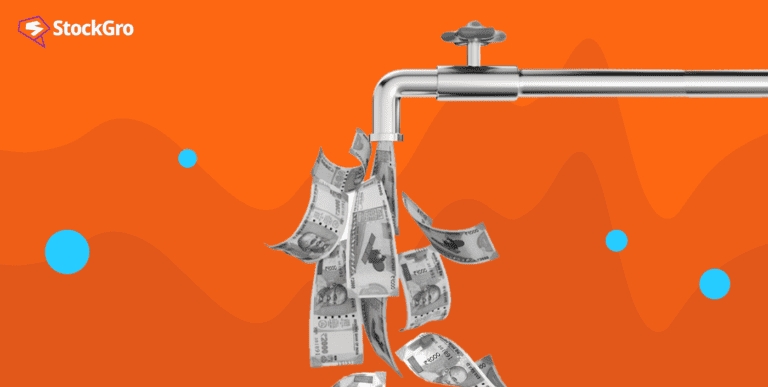
An Initial Public Offering (IPO) marks a critical juncture for a private enterprise, signifying its transition to a publicly traded entity. This occurs within a specific marketplace known as the primary market, where the issuing company offers shares directly to investors.
The IPO aims to generate capital, facilitating objectives such as business expansion or other strategic initiatives.
The company sets a predetermined price band during an IPO, a range within which investors must purchase the shares. This is where the term ‘face value’ comes in. It’s the nominal value assigned to each share by the company. Face value serves as the base price, and it remains constant.
Following the IPO, the company’s shares begin trading on the open market. Here, investors trade shares among themselves instead of on the primary market. The price at which these shares trade could be above or below the face value, known as the market value.
For a face value example, imagine an investor who acquires 200 shares of XYZ Corp at its IPO for Rs. 10 each. This leads to an initial outlay of Rs. 2000 as the company enters the stock market. After XYZ Corp becomes publicly traded, the share prices may fluctuate. If the market value exceeds the face value of Rs. 10, the investor would realise a profit on the initial investment.
Let’s explore the true meaning behind the face value of a share in this blog post.
What is face value of share?
Face value, also known as ‘par value,’ is the fixed worth of a share determined by the company when it’s first issued. Check your share certificate or digital demat account; this figure is clearly stated. The face value of the share formula is:
Face value = Equity share capital / Number of shares outstanding.
So, why is face value important? In a nutshell, it’s an accounting tool. It helps companies make sense of their share capital for the books and keeps things transparent on the balance sheet.
Additionally, businesses can also raise funds through the issuance of bonds. Bonds are debt instruments that promise to repay the investor at a predetermined future date.
Like shares, bonds have a face value. It’s the lump sum you’ll get back when the bond matures. But unlike shares, the face value of bonds can sometimes grow over time, depending on the terms of the bond.
Premium, par, and discount
A stock is considered to be trading:
- “At a premium”, a stock is said to be when its market value is greater than its face value. For instance, if a stock has a face value of Rs. 10 and is currently trading at Rs. 25, it is considered to be trading at a premium of Rs. 15.
- In contrast, when a stock’s market value equals its face value, it’s considered “at par.”
- The term “at a discount” describes a stock with a lower market value than face value. A discount of Rs. 50 is represented, for instance, by a stock trading at Rs.50 when its face value is Rs.100.
Different Types of Values in Finance
As for finance, if you are aware of the various valuations, it can make a great deal of difference when it is time to manage and increase your wealth. It does not matter whether you are an investor or a business owner or someone who wants to improve personal finances, understanding these values can help you in making better decisions.
In finance, there are a number of fundamental values that can be used for the evaluation of the well-being, investment opportunities, and profitability of the business:
1. Market Value
Market value refers to the current price at which an asset, such as stocks or real estate, is bought and sold in the open market.
It’s determined by supply and demand—when more people want to buy an asset, its market value increases, and when more people want to sell, it decreases.
Market value helps investors understand what the public is willing to pay for an asset at any given time, reflecting its perceived worth in real time.
2. Book Value
The value of an asset shown on a company’s balance sheet reflects its cost minus any depreciation.
It represents what the company paid for the asset initially, adjusted for wear and tear over time. This is used to measure a company’s net worth.
For example, if a machine was bought for ₹10 lakhs and its depreciation is ₹4 lakhs, the remaining value (₹6 lakhs) is considered on the books, helping in evaluating the company’s assets.
3. Fair Value
Fair value represents the estimated worth of an asset based on current market conditions, rather than its historical cost or face value.
It takes into account factors like demand, risk, and potential future earnings, making it a more accurate reflection of what the asset is worth today.
Commonly used in accounting, it helps investors and companies assess the true value of an asset during transactions or financial reporting, ensuring that it aligns with its market price.
4. Face Value
Face Value refers to the original value of a financial security, such as a bond or stock, as stated by the issuer.
For example, if a bond has a face value of ₹1,000, this is the amount the bondholder will receive when the bond matures. It doesn’t change with market conditions, unlike market value.
The face value is important for calculating interest payments for bonds, typically expressed as a percentage of the face value.
5. Intrinsic Value
Intrinsic Value refers to the true worth of an asset, based on factors like future earnings, financial health, and market conditions.
It differs from market value, as it focuses on fundamental aspects rather than the current market price. Investors use intrinsic value to determine if an asset is undervalued or overvalued.
For example, if a stock’s intrinsic value is ₹500 but its market price is ₹400, it’s considered undervalued, potentially offering a good buying opportunity.
Importance of face value in stock market
The face value of a share plays a critical role in the stock market, impacting several key aspects of trading and investment. Understanding its importance is fundamental for anyone involved in the stock market.
Dividends
One important role of the face value comes into play in dividend calculations. Dividends represent your portion of the company’s earnings. Are often calculated based on the face value of your shares.
To explain this further, if you own shares with a face value of Rs.10 and the corporation declares a 10% dividend rate, you will only receive Rs.1 as compared to Rs.10 if the market price is Rs.100 on the market.
You may also like: A guide to stock dividend
Stock split
A company may decide to increase its number of outstanding shares by executing a stock split. This will proportionally decrease the face value of each share.
Another example: Let’s say you own shares in the market priced at Rs.1000 each. With a face value of Rs.10 and the company goes for a 1:2 split, you’ll now own two shares.
The face value will adjust to Rs. 5, and the new market price will become Rs. 500 per share. The overall value of your investment doesn’t change, but the individual share price becomes more accessible to more investors.
Premium
Face value also helps calculate the premium a company charges during issuance. The issue price or the floor price is the sum of the face value and the premium charged.
Why does it matter? Well, this premium reflects investor sentiment. If investors are willing to pay more than the par or face value for each share it typically indicates positive prospects for the company.
Therefore when calculating your investment returns or gains keep this formula in mind;
Issue price = Face value + market premium.
Also read: A beginner’s guide to understanding share price calculations
Market value vs Face value: Key Differences
Face value and market value- These two may sound alike, but they are different in important ways. Let’s clarify.
| Face value | Market value | |
| Definition | The initial value of a stock when first issued. | The current selling or buying price on the stock market. |
| Impact of market conditions | Unaffected by market ups and downs. | Can change frequently due to market conditions. |
| Price setting | Decided by the issuing company. | Decided by supply and demand in the market. |
| Calculation | Equity share capital divided by the number of outstanding shares. | Current stock price multiplied by the number of outstanding shares. |
Understanding these terms helps new investors avoid confusion. A stock’s market value is typically more than its face value.
As a simple example, a business may list its shares with a face value of Rs. 10 but a market value that starts at Rs. 50. But sometimes, the opposite occurs, making it crucial to understand both terms.
Also Read: Understanding the difference between equity and debt IPO for the right investment
Final thoughts
The interplay between face value and market value is crucial for making informed investment decisions. Face value serves as a baseline for accounting and calculations like dividends, while market value reflects real-time investor sentiment.
For any strategic investor, understanding both is not just an academic exercise but a practical necessity. It equips you with the insights needed to navigate the complexities of the stock market effectively.

